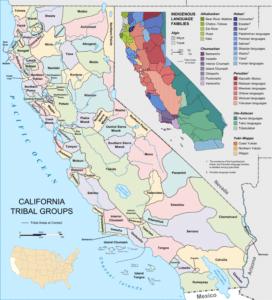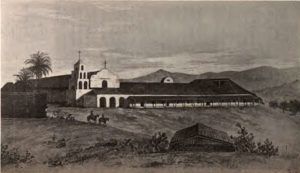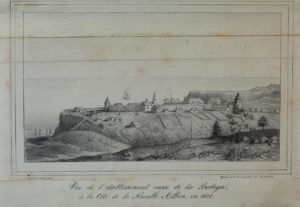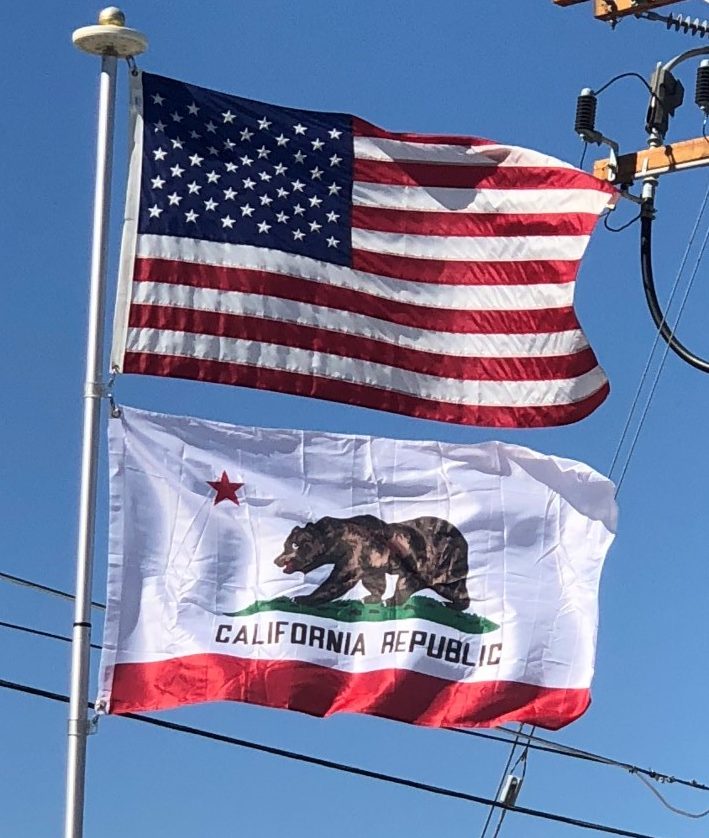The conventional wisdom that California was an island, with maps drawn to reflect this belief, lasted as late as the 18th century.
History:
Native Peoples:
Settled by successive waves of arrivals during the last 10,000 years, California was one of the most culturally and linguistically diverse areas in pre-Columbian North America. Various estimates of the native population range from 100,000 to 300,000. The Indigenous peoples of California included more than 70 distinct groups of Native Americans, ranging from large, settled populations living on the coast to groups in the interior. California groups also were diverse in their political organization with bands, tribes, villages, and on the resource-rich coasts, large chiefdoms, such as the Chumash, Pomo and Salinan. Trade, intermarriage and military alliances fostered many social and economic relationships among the diverse groups.

Colonial and Spanish Periods:
The first European effort to explore the coast as far north as the Russian River was a Spanish sailing expedition, led by Portuguese captain Juan Rodríguez Cabrillo, in 1542. Some 37 years later English explorer Francis Drake also explored and claimed an undefined portion of the California coast in 1579. Spanish traders made unintended visits with the Manila galleons on their return trips from the Philippines beginning in 1565. The first Asians to set foot on what would be the United States occurred in 1587, when Filipino sailors arrived in Spanish ships at Morro Bay. Sebastián Vizcaíno explored and mapped the coast of California in 1602 for New Spain.
Despite the on-the-ground explorations of California in the 16th century, Rodríguez’s idea of California as an island persisted. That depiction appeared on many European maps well into the 18th century.
After the Portolà expedition of 1769–70, Spanish missionaries began setting up 21 California Missions on or near the coast of Alta California, beginning in San Diego.

During the same period, Spanish military forces built several forts, presidios, and three small towns. The San Francisco Mission grew into the city of San Francisco, and two of the pueblos grew into the cities of Los Angeles and San Jose. Several other smaller cities and towns also sprang up surrounding the various Spanish missions and pueblos, which remain to this day.
The Spanish colonization began the genocide of the indigenous Californian peoples, decimating their numbers through epidemics of various diseases for which the indigenous peoples had no natural immunity, such as measles and diphtheria. The establishment of the Spanish systems of government and social structure, which the Spanish settlers had brought with them, also technologically and culturally overwhelmed the societies of the earlier indigenous peoples.
During this same period, Russian ships also explored along the California coast and in 1812 established a trading post at Fort Ross.

Russia’s early 19th-century coastal settlements in California were positioned just north of the northernmost edge of the area of Spanish settlement in San Francisco Bay, and were the southernmost Russian settlements in North America. The Russian settlements associated with Fort Ross were spread over an area stretching from Point Arena to Tomales Bay.
California Under Mexican Rule:
In 1821, the Mexican War of Independence gave Mexico, including California, independence from Spain. For the next 25 years, Alta California remained as a remote, sparsely populated, northwestern administrative district of the newly independent country of Mexico.
